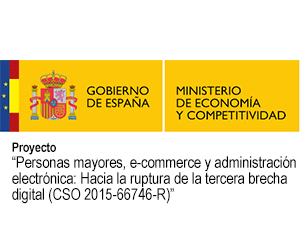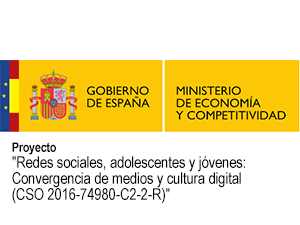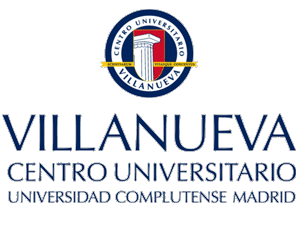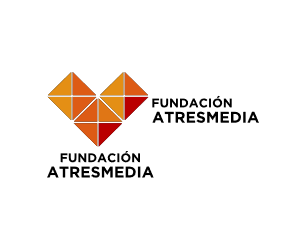Resumen
La presente comunicación parte de los datos obtenidos la tesis doctoral “El Iceberg Digital Machista”. A pesar de que la tesis mencionada explora diferentes realidades machistas que se reproducen en los medios digitales más utilizados por las y los nativos digitales (YouTube, redes sociales y videojuegos), como son la segunda brecha digital de género, la tercera brecha digital de género, el cibercontrol, y el ciberacoso sexual y sexista, esta comunicación, en concreto, se centra en esta última estructura machista. De este modo, con el uso de una metodología cualitativa el presente trabajo se adentra desde una lectura de género y (ciber)feminista en el Ciberacoso sexual y/o sexista que sufren las chicas a de la Comunidad Autónoma del País Vasco (CAPV). En esta línea, se parte de las siguientes hipótesis principales: 1) las chicas con las que sufren más acosos sexual y sexista a través de las redes sociales que los chicos; y 2) en estas formas de ciberviolencias se enraízan un legado patriarcal y machista.
Para abordar esta realidad se han teatratizado 9 grupos de discusión con el alumnado de la de 4º ESO y 1º de Bachiller de la CAPV (3 de chicas, 3 de chicos y 3 mixtos), y también se han realizado 2 foros telemáticos. Este engranaje metodológico cualitativo analiza las distintas formas de acoso que sufren las chicas, y profundiza en las estructuras patriarcales/machistas y sexistas que quedan detrás de estas formas de ciberviolencia; además, también permite conocer sus consecuencias.
Entre los resultados más representativos se pueden destacar que al igual que sucede en la realidad off-line, en las redes sociales reproducimos esquemas de género y relaciones asimétricas, y, por ende, violencias machistas. Concretamente, en las redes sociales se dan formas específicas de ciberviolencia contra ellas, ya que ellas son más insultadas por su físico, intimidadas sexualmente, y reciben más comentarios sexistas que ellos. De hecho, como las propias y propios participantes cuentan, es común recibir fotos de chicas (desnudas) y que, luego, estas sean sexualmente acosadas y reciban insultos machistas. Es decir, atendemos a un Ciberacoso sexista y/o sexual que, además, es muy difícil de discernir.
Con más detalle se puede especificar que de 9 institutos que participan en la investigación, en 8 se han dado estas formas de violencia. Sobre estos casos, el propio alumnado cuenta que en la mayoría de los casos las chicas se han visto tan dañadas que han tenido que abandonar el centro escolar de pertenencia (y en algunos casos, su propio municipio). Estas chicas, además, hacen frente a un fuerte estigma social, y en ellas se genera un fuerte sentimiento de culpabilidad.
En conclusión, dentro de las redes sociales se representan y reproducen espacios discriminatorios y dañinos para la mujer, que, sin duda, sus orígenes son los arraigos machistas y tradicionales de la vida “off-line”. Con ello, en esta comunicación se quiere reflejar la importancia de visibilizar estas formas de ciberviolencias, además de la premura de trabajar, prevenir e intervenir desde una perspectiva (Ciber)feminista en ellas.
Palabras Clave / Adolescentes / ciberacoso sexual y/o sexista / ciberfeminismo / género
Abstract
The present communication is part of the results belong to ”The macho-driven digital Iceberg” Phd project. Despite of the fact that the mentioned Phd project explores different macho-driven structures which reproduce in the most used digital media by screeneagers (YouTube, social networks and videogames), such as the second gender digital gap, the third gender digital gap, the cybercontrol, and the sexual/Sexist cyberharassment; concretely, this communication is focused on the last macho-driven structure. In this way, using a qualitative methodology and gender and (cyber)feminist theory the present work goes deep into sexual and/or sexist cyberharassment against girls from the Basque Country. In this line, the communication bases on following hypothesis; 1) girls suffer more sexual and sexist aggressions through social networks than boys; and 2) the background of those ways of cyberviolences is a patriarchal and sexist legacy.
For facing this reality 9 focus groups are performed with adolescents of 4 ESO and 1 Bachiller from high schools of Basque Country (3 of girls, 3 of boys and 3 mix), and also two online forum are done. These qualitative methodological gears analyse the different ways of harassment that girls suffer, and go deep into the patriarchal/macho-driven and sexist structures that are on the background of these ways of cyberviolence, and allow knowing its consequences.
Among the most representative results it can underline that as well as in the off-line reality is given, we reproduce gender schemata and asymmetry relationships in the networks, and, so that, macho-driven violence. Concretely, in the networks cyberviolence against girls are given, considering that girls are much more insulted due their physic aspects, sexually intimidated, and they receive more sexist comments than boys. Actually, as the participants tell, receive photos of (naked) girls is a common practice and then girls usually are sexually harass and then they receive sexist comments. That is, we attend to a sexual and/or sexist cyberharassment, which, furthermore, is so difficult to discern.
In more details, it can specify that from 9 high schools which take part in the research, in 8 a case of these violence is given. About these cases, the same students tell that in the majority of the cases the girls has suffer such an extreme damage that they have to abandon the high school (and in some cases, their village). Moreover, these girls face a strong social stigma, and deep feeling of guilty is created in their owns.
Overall, in the social networks it is reproduced discriminatory and hurtful spaces against women , and, without any doubts, their origin is the traditional macho-driven support of the “off-line” life. So that, this communication wants to reflect the importance of making visible these ways of cyber violence, and, also, the urgency of working, preventing and doing interventions from (cyber)feminist perspective in them.
Keywords / adolescents / cyberfeminist / gender / sexual and/or sexist cyberharassment
FIRMANTES
| Nombre | Adscripción | Procedencia |
|---|---|---|
| Estibaliz Linares Bahillo | Universidad de Deusto | Bilbao |
| Raquel Royo Prieto | Universidad de Deusto | Bilbao |
| Maria Silvestre Cabrera | Universidad de Deusto | Bilbao |















